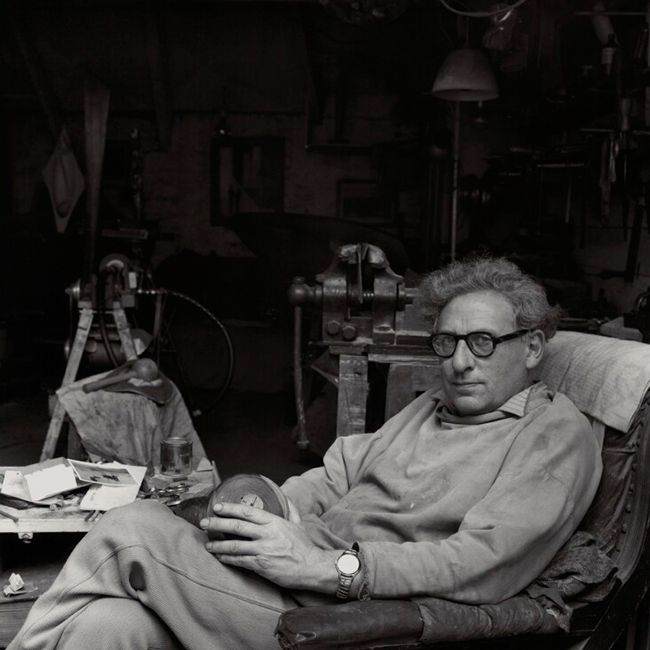Denis Mitchell
Denis Mitchell was born in Wealdstone, Middlesex in 1912. He was an abstract sculptor who worked primarily in bronze, slate, and wood. He grew up in Swansea, where he attended evening classes at Swansea College of Art.
He moved to Cornwall in 1930, working underground at Geevor tin mine during the Second World War, which helped him develop the necessary skills for carving and hewing rock. At the end of the war, Bernard Leach suggested his name to Barbara Hepworth as a suitable assistant: he was hired for one day and stayed with her for ten years, working for most of that period as her principal assistant.
By the early 1950s Mitchell’s own work had made the transition from painting to carving, and he was playing a full part in the buoyant post-war St Ives art scene, being elected chairman of the Penwith Society in 1955. In 1959 he began to make abstract sculptures in bronze using a local sand-casting foundry. Simple shapes can be cast by this method and the casts were initially rough, enabling him to use his manual skills to perfect and purify the surfaces.
When he started to outgrow his St Ives studio, his friend John Wells invited him to share Trewarveneth Studio with him, an old primary school building he had just bought in Newlyn. The young Cornish sculptor Tommy Rowe came to work as Mitchell’s assistant, and in their fruitful partnership Rowe worked alongside his teacher and friend and helped him to translate the endless sketchings and drawings into exquisite three-dimensional works in slate, bronze and wood.

Denis Mitchell was born in Wealdstone, Middlesex in 1912. He was an abstract sculptor who worked primarily in bronze, slate, and wood. He grew up in Swansea, where he attended evening classes at Swansea College of Art.
He moved to Cornwall in 1930, working underground at Geevor tin mine during the Second World War, which helped him develop the necessary skills for carving and hewing rock. At the end of the war, Bernard Leach suggested his name to Barbara Hepworth as a suitable assistant: he was hired for one day and stayed with her for ten years, working for most of that period as her principal assistant.
By the early 1950s Mitchell’s own work had made the transition from painting to carving, and he was playing a full part in the buoyant post-war St Ives art scene, being elected chairman of the Penwith Society in 1955. In 1959 he began to make abstract sculptures in bronze using a local sand-casting foundry. Simple shapes can be cast by this method and the casts were initially rough, enabling him to use his manual skills to perfect and purify the surfaces.
When he started to outgrow his St Ives studio, his friend John Wells invited him to share Trewarveneth Studio with him, an old primary school building he had just bought in Newlyn. The young Cornish sculptor Tommy Rowe came to work as Mitchell’s assistant, and in their fruitful partnership Rowe worked alongside his teacher and friend and helped him to translate the endless sketchings and drawings into exquisite three-dimensional works in slate, bronze and wood.
